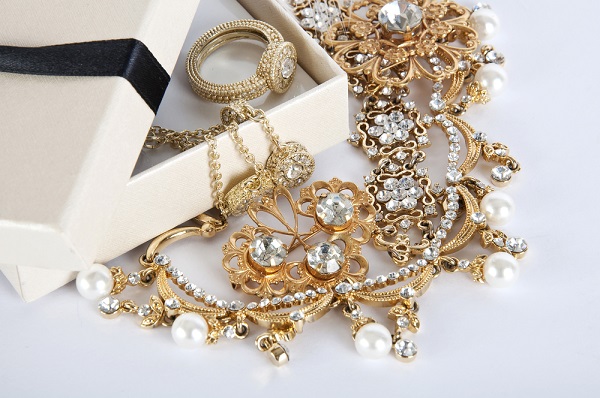Advantages of a Standalone Jewelry Policy in a Hard Market

By: Dustin Lemick
While independent agents have traditionally added higher value jewelry coverage to a client’s homeowners or renters policy, that “bundling” approach may no longer be optimal. The volatile homeowners marketplace with dramatically increasing premiums and non-renewals has caused agents and brokers to take a closer look at the advantages of a standalone jewelry policy.
That’s because even a single jewelry claim can have a negative impact on a client’s homeowners or renters policy. A standard homeowners policy without a rider, for example, will usually limit any loss on personal property such as jewelry to $2,000. Making a claim for a higher amount means that the client has to pay out of pocket to get a replacement of equal value, including a deductible if applicable. Making a claim through a “rider” added to a homeowners policy is likely to be counted as a claim against the homeowners policy. Even a separate “floater” policy may have an impact.
All claims through homeowners policies, even if they are denied, are typically reported to third parties where claims are recorded in a comprehensive loss underwriting exchange database such as CLUE or A-PLUS Property. These third-party databases are accessed by insurance companies to assess an individual’s risk when setting premium costs or deciding to cancel or non-renew a policy. A jewelry claim could remain on the client’s record for up to seven years.
As risks, disasters and payouts have increased over the past few years, insurance companies across the board are closely monitoring claim activity. In some cases, an individual homeowner may lose coverage with only one or two claims in the last few years or three claims over a longer 10-year period.
Research into how often people make jewelry insurance claims is limited. Not surprisingly, about 80% of total loss jewelry insurance replacement claims fall under the category “mysterious disappearance,” according to BriteCo internal data, meaning there is no direct cause that can be identified when a piece goes missing. The balance of total loss claims—about 19%—are attributed to theft, and only about 1% from all other causes.
The other causes that prompt filing a jewelry insurance claim are fairly intuitive. Excluding total loss jewelry claims, more than half of claims are due to minor damage or missing gemstones, which may not be covered by a homeowners policy, according to BriteCo internal data. In any case, jewelry claims that are handled on a replacement-only basis help minimize fraud, as well as keeping policy costs down.
Protect Your Clients From Homeowners Insurance Turmoil
Every week seems to bring another announcement of a major carrier withdrawing or modifying its homeowners coverage. Some major carriers have stopped writing new homeowners policies in California, while Florida has seen multiple carrier bankruptcies and major carriers withdrawing from their homeowners markets.
Meanwhile, most homeowners insurance clients—regardless of where they live—are experiencing a 12% increase in premiums this year, according to Policygenius. At the same time, personal auto insurance rates have increased an average of 17% in the U.S. from June 2022 to June 2023, according to the U.S. Bureau of Labor Statistics.
As turmoil in the homeowners and auto insurance markets accelerates, more than 50% of consumers said they are looking for ways to save money on their existing insurance policies, according to the latest Agency Forward research study by Nationwide.
When asked how they are saving money on insurance, 26% of consumers said they are decreasing or plan to decrease coverage or limits on existing policies. Twenty-three percent have or are considering switching to a new insurance agent, and 20% have already removed a policy from their coverage or plan to in the next six months.
The message from markets is clear: Independent agents and brokers can no longer assume that their clients will simply renew their policies automatically. For the foreseeable future, agents and brokers will need to take a more proactive approach in their advisory roles with clients. A standalone jewelry insurance policy is one way to deliver value and savings to clients who are sorely in need of a break.
Until now, the business model for major carriers has been to focus on package policies, offering homeowners, auto, umbrella, valuables and term life insurance together under one roof for clients. However, independent insurance agents have the advantage of considering how their clients can protect their homeowners policies by unbundling coverages so that claims under one coverage do not impact homeowner renewals or premiums.
A standalone jewelry insurance policy, for example, offers several advantages for agents and clients facing homeowners coverage and premium uncertainty. Unbundling the typical rider or floater for jewelry items from homeowners insurance gives your client a standalone jewelry policy with important benefits.
Here are some factors agents should consider when recommending a specialty jewelry insurance provider:
1) Quoting and binding. Evaluate the ease and quickness of getting quotes and binding policies. Is the standalone jewelry insurance provider leveraging technology to make life easier for you and your clients? Your agency accounting lift should be minimal when it comes to payments, renewals, tracking commissions and managing claims.
2) Coverage. Ensure that the carrier provides broad coverage for mysterious disappearance, damage and possibly preventative maintenance.
3) Reporting. Unlike a homeowners rider or floater, claims made against a standalone jewelry insurance policy should not be counted as a claim against a client’s homeowners insurance. Be sure to ask if the jewelry insurance provider reports jewelry claims to third parties.
4) Rates. Make sure the jewelry policy includes competitive rates for worldwide, all-risk coverage of the item’s appraised value. Optimal policy pricing should be from .5% to 1.5% of the appraised value annually for each item, though most standalone policies range from 1% to 3%.
5) Deductibles. Look for a jewelry insurance provider that minimizes or eliminates deductibles for their standard policies. Clients should also receive discounts for a burglar alarm as well as a home safe.
6) Customer experience. Compare responsiveness, customer reviews and claims experiences among specialty jewelry insurance providers.
7) Carrier rating. You want a specialty jewelry insurance provider that is backed by an A-rated carrier and is licensed in all 50 states.
Dustin Lemick is CEO of BriteCo Jewelry Insurance.










